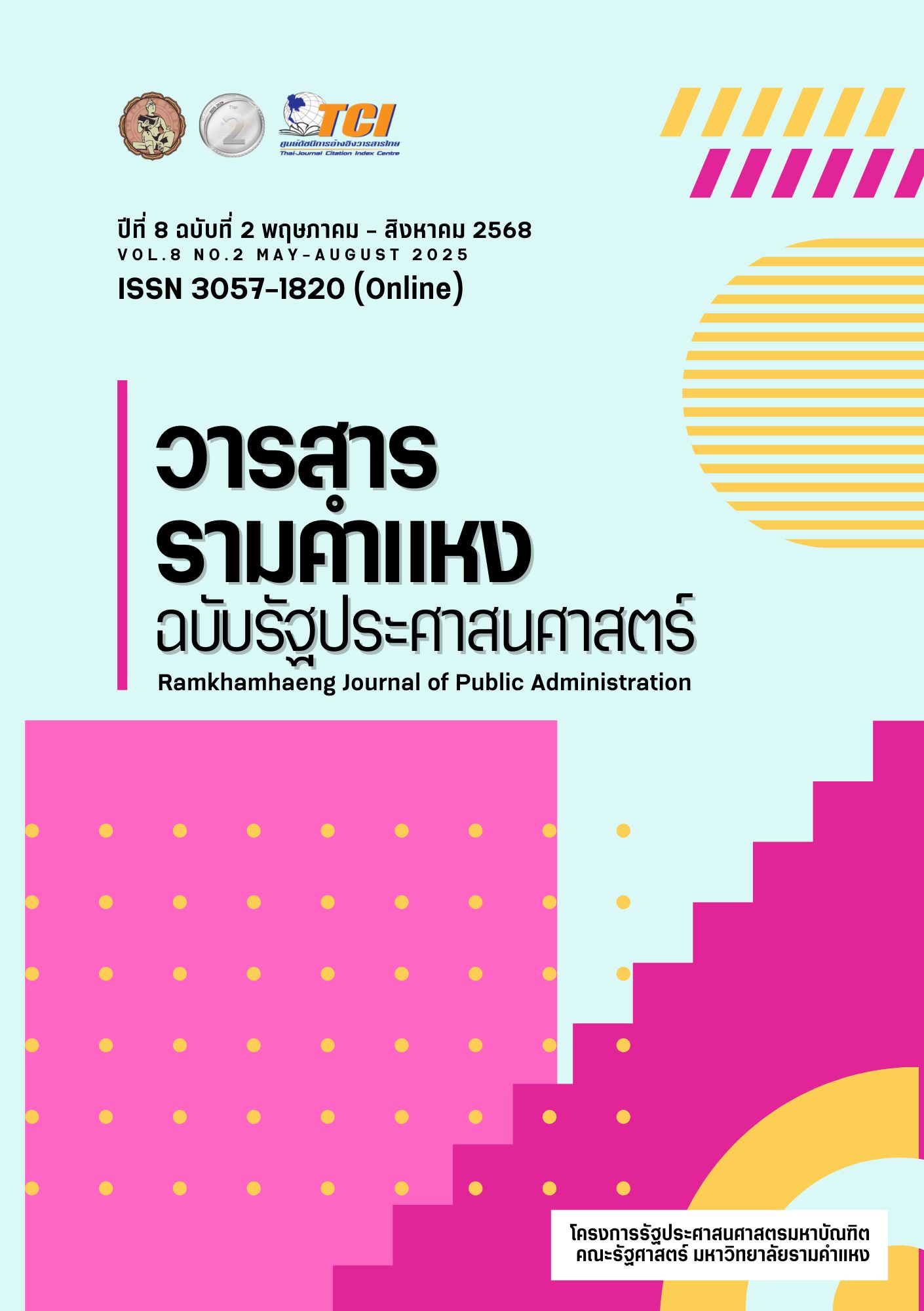Participation in water resource management of farmer water users in the Huai Hin Khao Irrigation Project, Saraburi
Keywords:
participation, water resource management, farmer water users, Saraburi Irrigation ProjectAbstract
This research aims to study the level of participation in water resource management among the agricultural water users of the Huai Hin Khao Irrigation Project in Saraburi and to propose guidelines for enhancing their participation in water resource management. A mixed-method research approach was employed, utilizing a questionnaire as a tool for quantitative research and interviews as a tool for qualitative research. The quantitative research involved a sample of 105 respondents, while the qualitative research included 5 participants, making a total of 110 respondents. Quantitative data were analyzed using frequency, percentage, mean, and standard deviation, while qualitative data were analyzed through interpretation and inductive conclusion.
The research findings revealed that: The overall level of participation in water resource management among the agricultural water users of the Huai Hin Khao Irrigation Project in Saraburi was high. When analyzed by specific aspects, ranked from highest to lowest in terms of mean score, the findings showed that participation in decision-making and planning was at the highest level, followed by ownership, monitoring, and suggestion, all of which were at a high level. The proposed guidelines for addressing issues in water resource management among the agricultural water users of Huai Hin Khao include: (1) Promoting farmers' participation in all stages, including planning, providing suggestions, and monitoring. (2) Developing and expanding communication channels to facilitate farmers in expressing opinions and exchanging information more conveniently. (3) Organizing training sessions and providing knowledge on efficient and sustainable water management. (4) Supporting the development of a sense of ownership among farmers to encourage responsibility and collective maintenance of water resources. and (5) Continuously monitoring and improving management plans to enhance efficiency and adaptability to changing situations.
References
การบริหารจัดการน้ำและการบริหารองค์กรผู้ใช้น้ำ. (2566). การบริหารจัดการชลประทานโดยเกษตรกรมีส่วนร่วม. กรุงเทพมหานคร: กรมชลประทาน.
คู่มือการมีส่วนร่วมของประชาชน. (2552). ความสำคัญของการมีส่วนร่วมของประชาชน. กรุงเทพมหานคร: กรมชลประทาน.
ฐากูร หอมกลิ่น. (2557). การบริหารจัดการน้ำแบบมีส่วนร่วมในเขตชลประทานโครงการส่งน้ำและบำรุงรักษาเพชรบุรี. วิทยานิพนธ์ปรัชญาดุษฎีบัณฑิต สาขาวิชารัฐประศาสนศาสตร์ มหาวิทยาลัยศรีปทุม.
ปัณณทัต บนขุนทด และคณะ. (2562). การมีส่วนร่วมของประชาชนในการพัฒนาชุมชน ตำบลอิสาณ อำเภอเมือง จังหวัดบุรีรัมย์. วารสารบัณฑิตศึกษามหาจุฬาขอนแก่น 6(1), 209-222.
ศิริชัย พงษ์วิชัย. (2549). การวิเคราะห์ข้อมูลทางสถิติด้วยคอมพิวเตอร์. กรุงเทพฯ: สำนักพิมพ์แห่งจุฬาลงกรณ์มหาวิทยาลัย.
Best, W. John. (1970). Research in Education (3rd ed.). New Jersey: Prentice-Hall.
Cronbach, L.J. (1990). Essentials of psychological testing (5th ed.). New York: Harper & Row.
Likert, R. A. (1932). Technique for the Measurement of Attitude. Archives Psychological, 3(1), 1 - 55.
Downloads
Published
How to Cite
Issue
Section
Categories
License
Copyright (c) 2025 จิตรลดา จำปา

This work is licensed under a Creative Commons Attribution-NonCommercial-NoDerivatives 4.0 International License.



